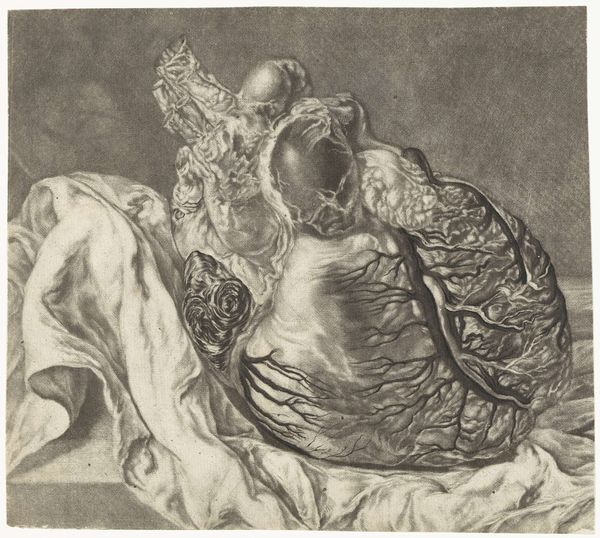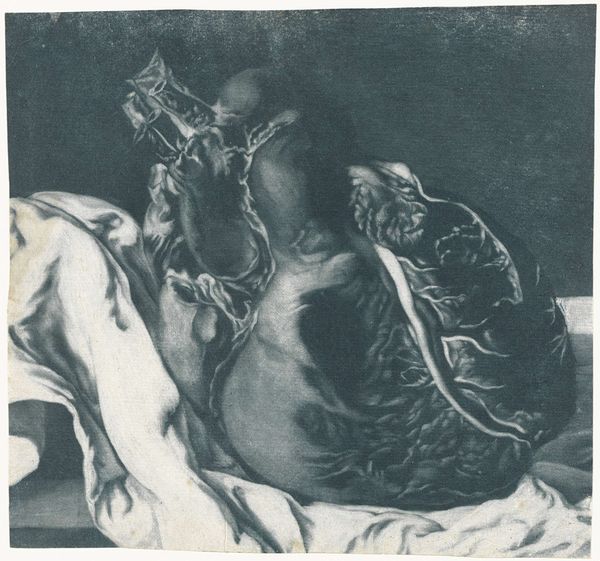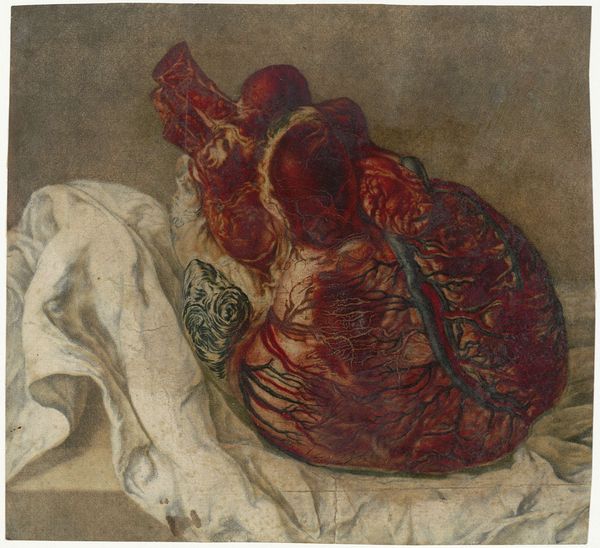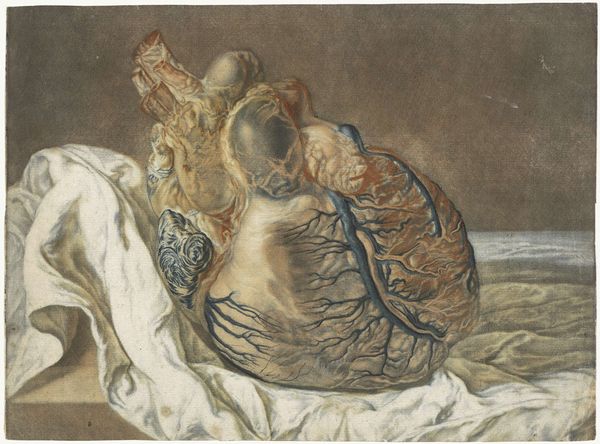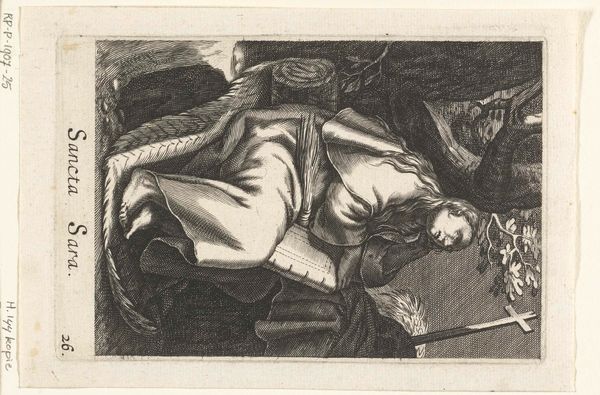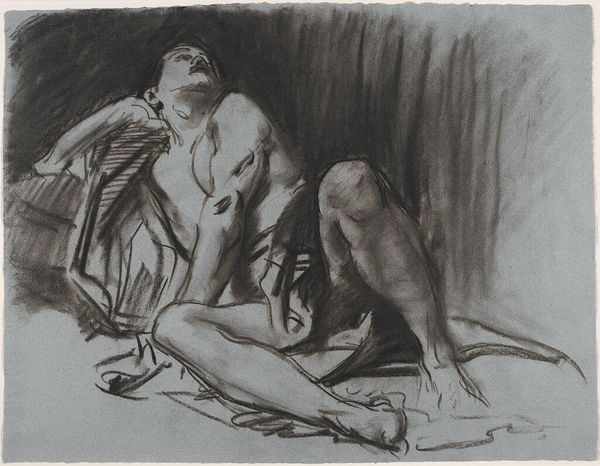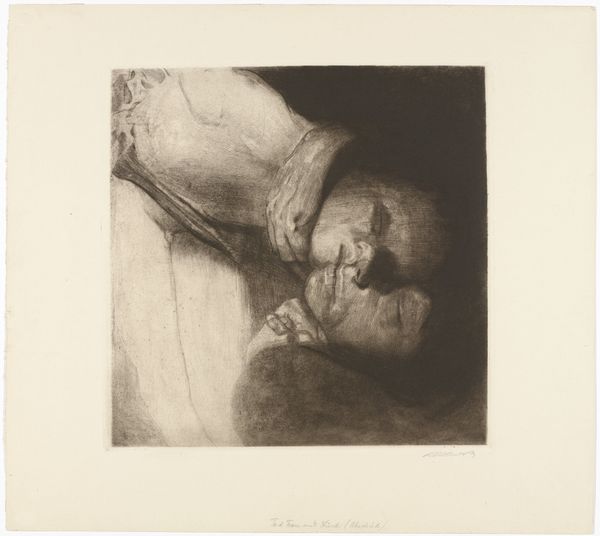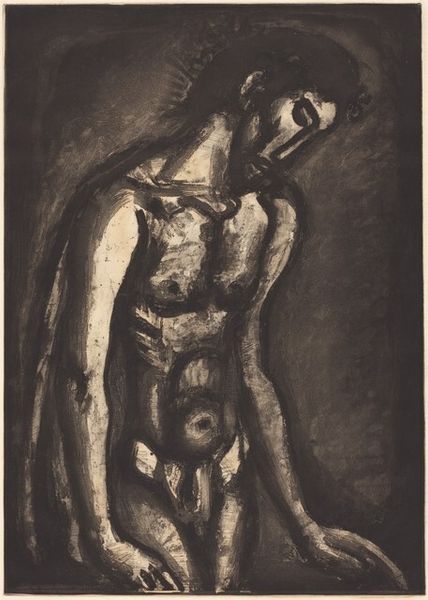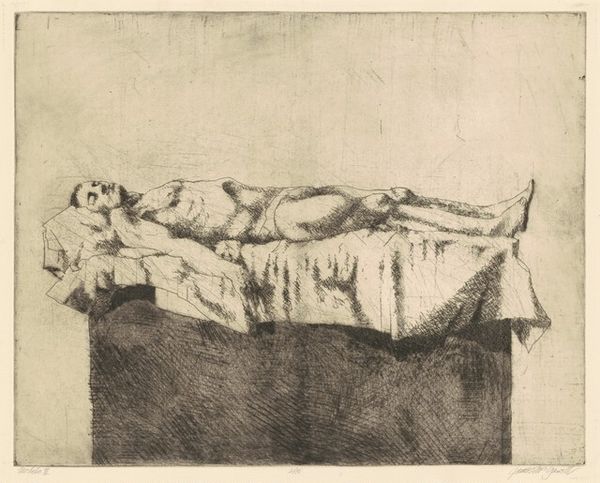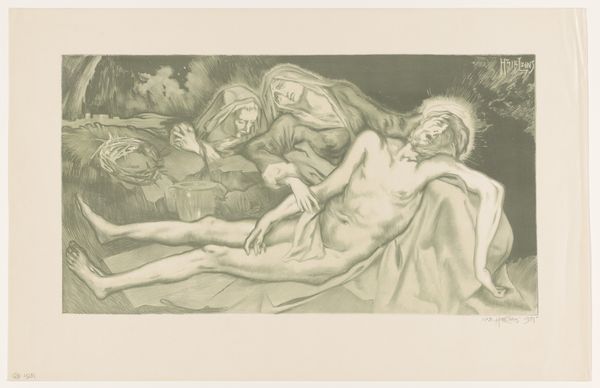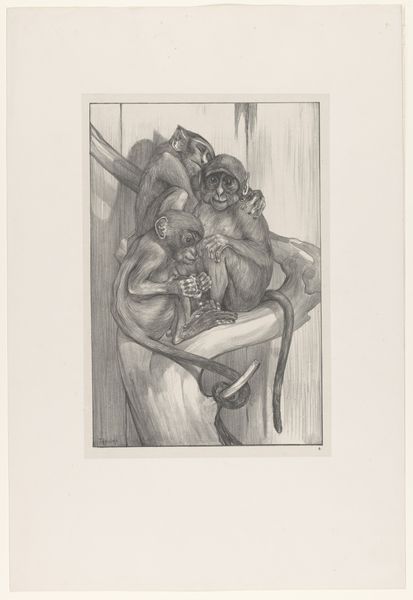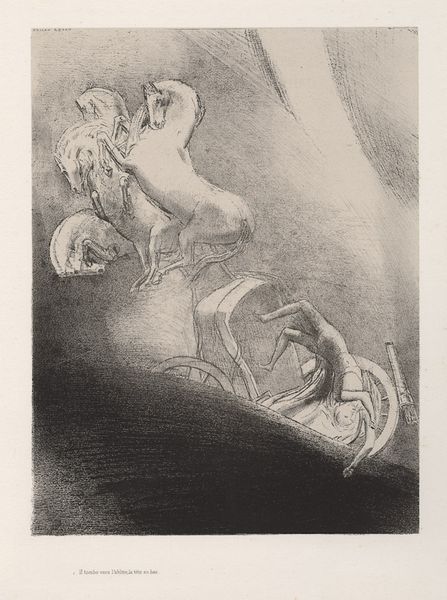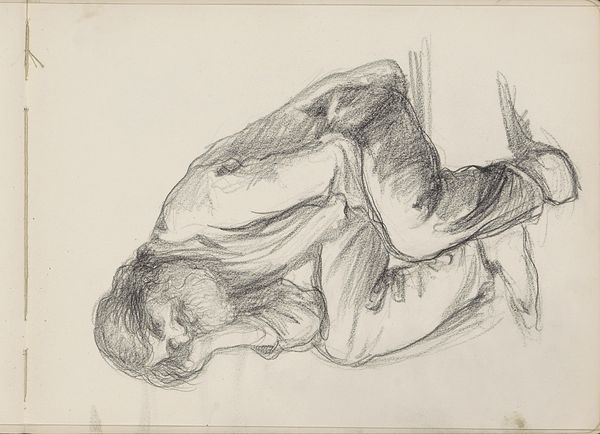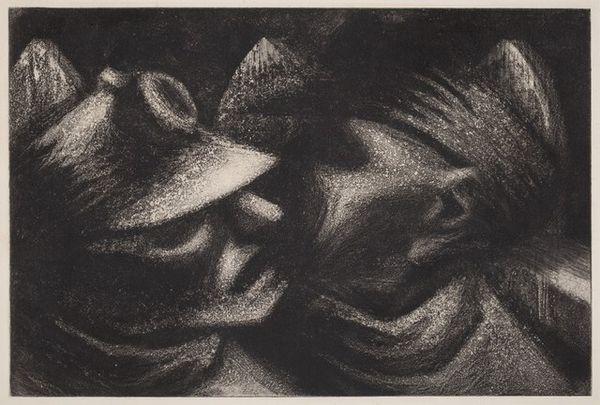
print, engraving
#
baroque
# print
#
charcoal drawing
#
history-painting
#
charcoal
#
engraving
Dimensions: height 203 mm, width 220 mm
Copyright: Rijks Museum: Open Domain
Jan l' Admiral created these prints of the brain and the heart sometime in the 18th century. It's an arresting image, isn't it? A vital organ and the seat of reason, laid bare for examination. The Dutch Republic, where l' Admiral worked, was a hub of scientific inquiry during this period. Anatomical theaters, where the public could witness dissections, became quite popular. These prints reflect that burgeoning interest in understanding the human body. But the question is: Were these images intended purely for scientific study, or do they speak to something more? Consider the context: the Enlightenment was challenging traditional beliefs. Perhaps l' Admiral, through his art, was participating in a broader cultural shift, encouraging a new way of seeing ourselves. To fully understand these prints, we might look to medical texts of the time, or even philosophical debates. Art is rarely created in a vacuum; its meaning is always shaped by the social and intellectual currents of its day.
Comments
rijksmuseum about 2 years ago
⋮
Around 1735 Jan l’Admiral printed several remarkable anatomical prints in colour, among others on commission for the celebrated physician Frederik Ruysch. For his illustrations of the cerebral membrane (the skull of an unborn child) and a human heart he experimented with ever different colours, and made various versions of them. The objective was to provide medical practitioners with the most precise and realistic images possible.
Join the conversation
Join millions of artists and users on Artera today and experience the ultimate creative platform.
